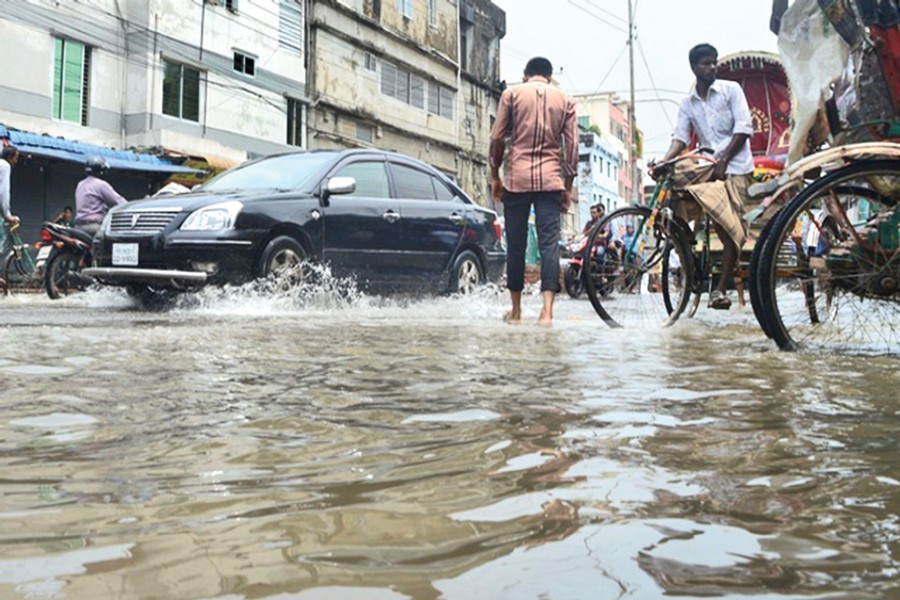
Published :
Updated :

This year witnesses a cat-and-mouse game of the rainy and sunny days. The season is one of pure monsoon though. This points to the capricious trends of Nature. Having gone through the pre-monsoon spell of downpour for days, the ceremonial arrival of the Bengal rains might make many city residents bring to mind a new weather feature. In the last few years, the pattern of waterlogging has changed. Localities known for the malady may have been somewhat freed. Critics may not give credit for this disappearance of water-logging to the steps taken by the two city corporations. They feel it is low monsoon intensity, which keeps Dhaka free of severe waterlogging.
Nature continues to be unpredictable; so are the climate behaviours. This year's premature start of monsoon showers and their coalescence into the 2-month season of rains warrants a new definition of the arrival of monsoon and water-logging. People began believing the dominant trends of Bangladesh monsoon had started changing. They thought they could expect to see the times featuring milder forms of monsoon. As a rational turn of things, they looked forward to passing the monsoons without undergoing the series of miseries normally related to waterlogging. To the disillusionment of many, it didn't happen. The venues of waterlogged streets and neighbourhoods emerged to have been dispersed. The menace shifted to areas, which had so far been free of water-logging.
Coming to the overhaul of the flawed rainwater flushing system, the relevant authorities couldn't demonstrate any feat capable of impressing the citizenry. The outbreak of the destabilising Covid-19 played its part in disrupting the efforts to renovate the capital's drainage. The so-called urgent drives to reclaim the lost city canals once used for releasing stagnant rain waters had continued to be lost in their earlier futility. As part of a horrendous reality, the land grabbers became hyperactive during the corona-prompted shutdowns. They kept encroaching on the canals. There are few signs at the moment, a full monsoon being active, to foresee the re-launch of the canal-recovery campaigns. Moreover, the country is now under a 'strict lockdown'. The monsoon, vis-à-vis the resultant overflowing of roads with dirty water and the submersion of low-lying areas -- coupled with people's ordeals this year doesn't bode well. In the last couple of years absence of severe water-logging prompted the Dhaka dwellers to expect that they had at long last been set to come free of the scourge. Their expectations had their roots in the disappearance of the spectacles of waterlogged roads in areas of the central Dhaka. In the Old City, barring a few pockets, many roads were seen being free of waterlogging.
The menace this year has been found raging in full vengeance in the middle parts and the higher swathes of the city. Experts have not failed to point the finger at the absence of effective planning and lack of coordination between different agencies for the water-logging of fresh areas. Keeping its cities free of waterlogging is an imperative for the country's cherished inclusion in the group of middle-income nations. The countries hoping to be recognised as middle income need to meet some basic requirements. Along with the removal of pervasive poverty, irritants like unemployment and homelessness, they also ought to address urban environmental pollution and the scourge of waterlogged cities.


 For all latest news, follow The Financial Express Google News channel.
For all latest news, follow The Financial Express Google News channel.